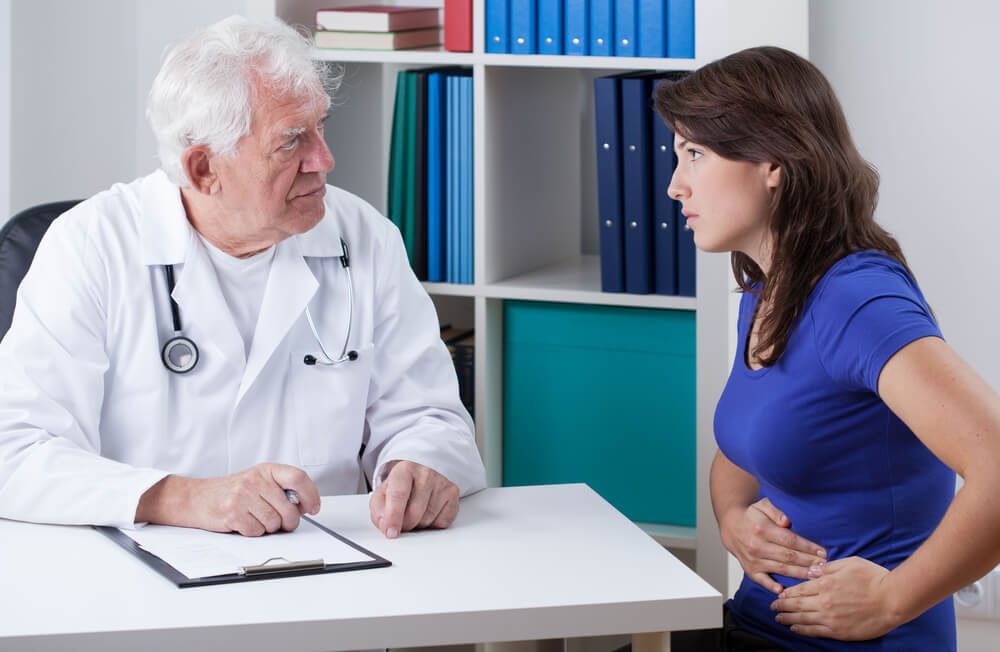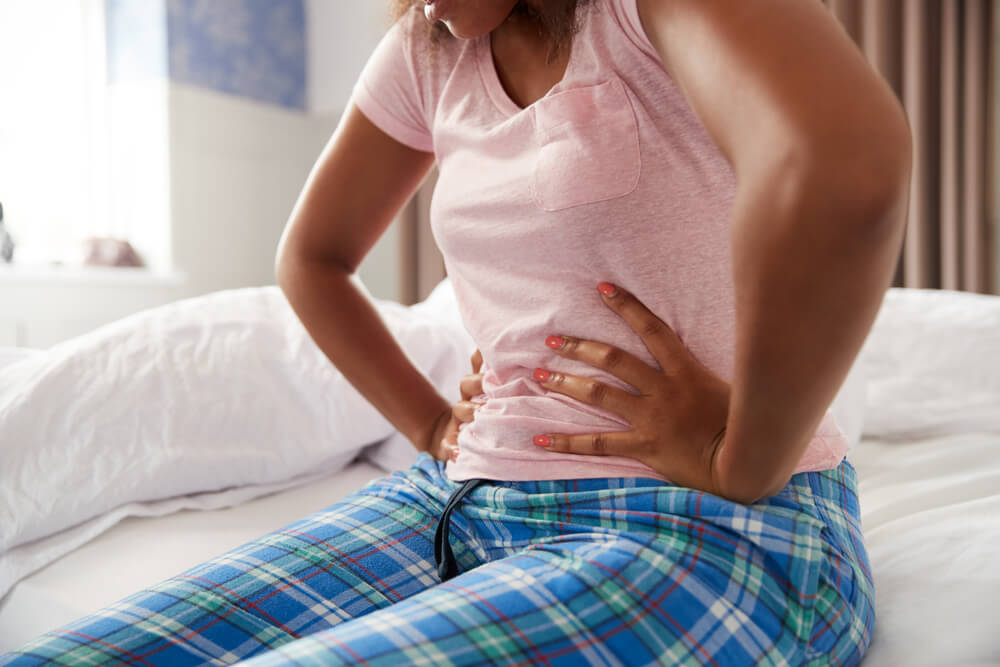Dysmenorrhea is the medical term that experts use when talking about menstruation pain or, more commonly, menstrual or period cramps. Generally speaking, there are two main types of dysmenorrhea, primary and secondary.
What causes them, and how to relieve menstrual cramps? What are the most prominent symptoms of dysmenorrhea? Before looking for excellent providers in the field of obstetrics and gynecology in South Miami, Florida, read our latest blog post about period cramps so you won’t visit your provider unprepared.
Primary vs. Secondary Menstrual Cramps
For the most part, differentiating the two types of dysmenorrhea shouldn’t be that difficult. Primary pain refers to those recurrent menstrual cramps that aren’t because of other underlying conditions. The pain usually starts a few days before the patient gets their period (when the bleeding actually begins). In the case of primary menstrual cramps, the pain may be mild, but it may also severely affect the back, lower abdomen, or thighs. Usually, the pain will last from 12 to 72 hours with menstrual cramp symptoms, including vomiting, nausea, fatigue, and possible diarrhea. As women age, common menstrual cramps will cause less pain and may even stop altogether after pregnancy.
Secondary menstrual cramps, on the other hand, result from an infection or disorder in the female reproductive system. In these cases, the pain may develop even earlier and persist longer than common menstrual cramps. Also, patients usually don’t have problems with fatigue, vomiting, diarrhea, and nausea.

Causes and Most Common Menstrual Cramp Symptoms
Primary Menstrual Cramps
In the case of primary dysmenorrhea, a chemical referred to as prostaglandin causes the uterus to tighten up. This is a surprisingly muscular organ that starts contracting during the menstrual cycle, and during menstruation, the contractions become more pronounced. If they become too intense, the uterus can press up against neighboring blood vessels, potentially cutting off the oxygen supply to muscle tissue, and these brief oxygen losses can result in pain.
Secondary Dysmenorrhea
As mentioned, in these cases, the pain is the result of an underlying condition of the reproductive system. The problems that could lead to menstrual cramping may include:
- Benign tumors (fibroids): These are noncancerous growths outside, inside, or on the walls of the uterus.
- Adenomyosis: This is a condition in which the uterine lining grows into the uterine musculature, causing the organ to become bigger than it should be, triggering pain and abnormal bleeding in the process.
- Cervical stenosis: This is known as the narrowing of the uterine opening or the cervix.
- PID or pelvic inflammatory disease: This is a bacterial infection affecting the uterus primarily, but it may also spread to other organs in the reproductive system. PID may also lead to stomach pain and painful intercourse.
- Endometriosis: This is a condition in which the endometrium, or the uterine lining, is found outside of the organ. And because the lining’s tissue bleeds during a woman’s period, scarring, swelling, and pain can occur.
Symptoms
Primary menstrual cramp symptoms will usually be the following:
- Abdominal pain and aches that can get pretty severe
- Abdominal pressure
- Pain in the inner thighs, lower back, or hips
- Nausea, vomiting
- Diarrhea
- Fatigue
In the case of secondary menstrual cramps, the pain-related symptoms are similar. Still, the cramps themselves are a symptom of another condition that may have several other signs in the reproductive system.
Diagnosing Menstrual Cramps
Women should reach out to their healthcare provider if they are experiencing menstrual cramps that last for more than three days. Fortunately, patients can find relief from both cramp types, so it’s pivotal to undergo professional evaluation.
First, patients will be asked to describe their menstrual cramp symptoms and cycles overall. Providers may also opt for performing a pelvic exam, during which the expert inserts a speculum to examine the vagina, uterus, and cervix. The doctor will also examine the reproductive system for any unusual changes and lumps. They may also take small testing samples of vaginal fluid.
If the doctor suspects secondary dysmenorrhea, they may recommend additional tests, such as laparoscopy or ultrasound, to pinpoint the exact cause of the pain and to address the problem with adequate treatment.
Lastly, if you use tampons and experience the following symptoms, get medical assistance immediately:
- Vomiting
- Fever
- Dizziness, near-fainting, or fainting
- Diarrhea
- Development of rashes that look like sunburns
These symptoms may signal toxic shock syndrome, which is a life-threatening condition requiring immediate medical assistance.

How to Relieve Menstrual Cramps: Treatment Options
How to relieve mild menstrual cramps? In some cases, when the discomfort is only light, the following things may help:
- Placing a hot water bottle or heating pad on the abdomen or lower back
- Getting adequate rest when required
- Avoiding smoking, alcohol, and caffeinated drinks
- Massaging the abdomen or lower back
- Taking ibuprofen right when the cramping or bleeding begins; Ibuprofen is a type of NSAID or a nonsteroidal anti-inflammatory drug that can reduce the prostaglandins’ output. On the other hand, if you can’t take NSAIDs, other compounds, such as acetaminophen, might help relieve the discomfort.
Experts state that those women who exercise regularly will often experience less pain during their period. As such, consider establishing a regular exercise regime if you are serious about relieving the pain from menstrual cramps.
If these methods fail to relieve the pain, you can always consult your provider about other medications. In some cases, apart from OTC medications, your provider might also recommend oral contraceptives because they help with menstrual pain and cramping.
If your diagnosis shows that an underlying condition is causing the cramping, your provider will discuss the best treatment option for the condition that’s causing trouble. In these cases, treatments may vary from medication through oral contraceptives to surgery.
Lastly, some alternative therapies might help with menstrual cramping. While studies on these complementary or alternative treatments haven’t been entirely conclusive, some patients might find yoga, breathing and relaxation exercises, acupressure, and acupuncture helpful.
Can Menstrual Cramping Be Prevented?
While patients may not be able to prevent menstrual cramping, regular exercise and eating a well-balanced diet may help with decreasing the intensity of the cramping.
Sometimes, bad cramping can interfere with women’s everyday life, keeping them from going to work or attending school. While taking some time off and resting is normal, those living a busy life shouldn’t put their life on hold. They can always contact their provider to assess their painful periods.
On that end, those already experiencing painful and problematic periods should track them to have a complete report for their providers. Having a record of your periods may also help identify new symptoms such as heavy flows, headaches, and other symptoms, enabling your provider to establish a more precise diagnosis and recommend the most beneficial treatment.
Don’t Suffer in Silence
Menstruation and occasional cramps are entirely normal. Even recurring cramping is normal, but women don’t have to endure the pain. There are several ways to find relief. If you would like to learn more about them, feel free to reach out to us today.


